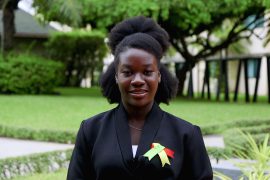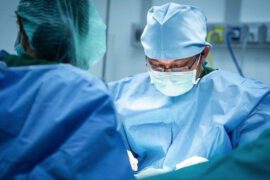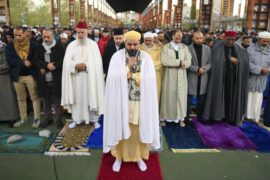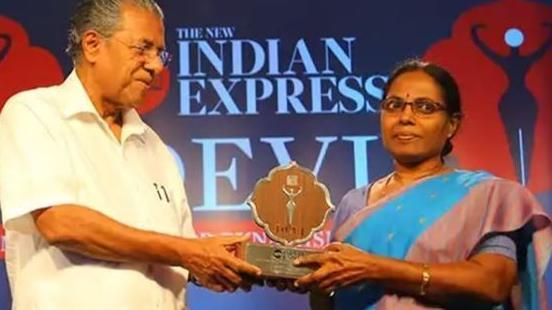
Warning: Dis article get descriptions of dead bodies and of autopsies
Dr Shirley Vasu don win multiple awards for her pioneering work – but her family dey fear to hear too much about di details of her career.
For three decades, Dr Vasu examine di bodies of pipo wey die suddenly, violently or suspiciously.
Dr Vasu na di first female forensic pathologist from di south Indian state of Kerala, wey be home to over 33 million pipo.
Dis one dey particularly unusual for dis part of India, wia cultural stigma around death mean say women dey often avoid crematoriums.
Dr Vasu don perform around 20,000 autopsies, from embryos to pipo wey dey approach 100, and she don see death at evri stage of life.
But many of di 68-year-old doctor recollections go dey more at home for crime thriller novel dan a medical textbook.
- Mama of nine-month-old pikin dey part of pipo cholera kill for Ebonyi – how you fit avoid di disease
- Akwa Ibom state govnor lose im wife
- Invasion of Lebanon: Wetin fit happun?
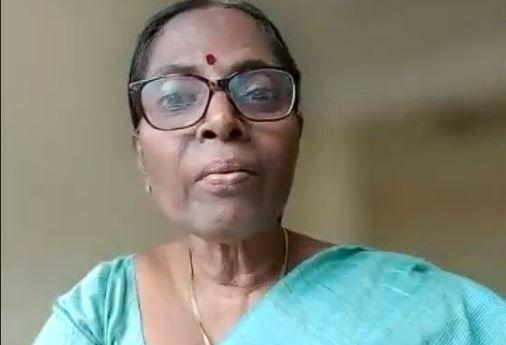
Di first case
Dr Vasu first experience to examine deadi body come as a postgraduate student for 1981, wen her professor ask her to check a skull and some upper-arm bones wey dem find 13m underwater for one waterfall.
“Di bone don lose all di biological content,” Dr Vasu recall.
Along wit two oda students, she work out say di victim na male by looking at di way wey di skull dey connected to di vertebra. Dem estimate say im be 14 or 15.
“Di upper arm bones show several cuts for im body wey no look alike in an attempt to mutilate di body,” she write at dat time. “Na murder”.
Dr Vasu no get camera at di time, so she take di bones go one photo studio and lay dem on a table for a photographer to document.
However, at di sight of di remains, di photographer wey fear well-well call di police – meaning Dr Vasu professor get to intervene to avoid her being di subject of suspicion.
Di victim dem later identified as a local boy wey don dey missing 41 days earlier. Di main suspect na im 18-year-old cousin – but in di end, no one bin dey convicted in relation to di young boy death.
Wetin dey happen during an autopsy?
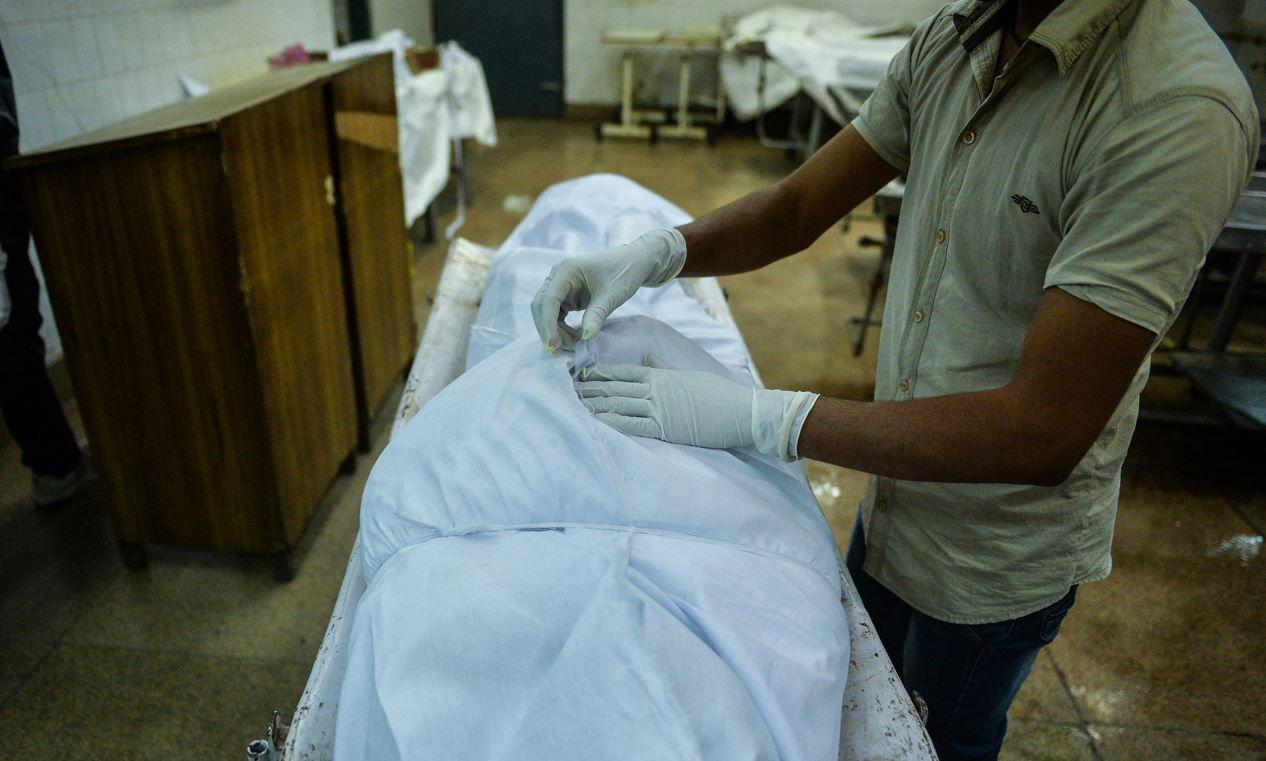
Di aim of autopsy na to determine di time and cause of death, and who be di dead pesin, if dem no know bifor.
Dr Vasu join di forensic department of Kozhikode hospital in 1982 and conduct two to three 90-minute autopsies per day. On a busier day, she go do as many as seven.
She routinely examine burned, mutilated, rotten, crushed, badly disfigured and even exhumed human remains.
Dr Vasu say di first step na di exterior visual examination to look for “injuries, marks and findings of concern”.
Dis dey followed by an internal examination of di chest, abdomen and pelvis, and di organs and structures inside dem. Tissue samples go dey collected for testing.
Den, finally, di skull go dey opened to inspect di brain.
If a pesin dey shot, dem go do a full-body X-ray to locate bullets. If di deceased get tuberculosis or bin don get radioactive implants as part of cancer treatment, den two doctors go share di work to reduce exposure risks.
Dr Vasu also recall seeing one or two cases each year in which one family member don convince odas, including children, to take part in a collective suicide.
“Dis na part of our professional work,” she tok. Afta a long pause, she add say: “You feel sad to see bodies of children.”
‘Criminal abortions’
Wen she bin dey work for Kozhikode in northern Kerala, Dr Vasu notice a spike in deaths among young pregnant women.
Unusual findings during dia autopsies lead Dr Vasu to suspect say di deaths na due to “criminal abortion”.
“I find cut marks in di cervix,” she recall. “Wen di actual doctor do an abortion, Dem no dey leave such cruel marks.”
E turn out say di women don die due to painful uterine sepsis.
Dem later catch a group of retired helpers (ayahs) from di gynaecology department of di goment hospital wia Dr Vasu work wey bin dey conduct abortions for dia homes using stolen equipment. In di end, six elderly women bin dey caught and imprisoned.
As well as offering evidence of criminal behaviour, autopsies also dey make am clear wen no foul play dey occur.
Dr Vasu clearly remember one man fear say im go dey investigated as a suspect afta im 98-year-old mother fall from her bed and die.
But Dr Vasu autopsy find say di death na accident.
“A simple fall fit dey fatal for young children, as well as old pipo,” she tok.. “She fall fall angle wey break di connection between her brain and spinal chord.”
Tiger-eaten body
In di late 1980s, Dr Vasu and anoda doctor bin go di Wayanad Tiger reserve, wey dey about 110km from Kozhidoe, to do autopsy on di remains of a woman wey bin dey eaten by a tiger. Only her head and neck bin dey intact.
For di scene, e appear as if di woman bin try to hang herself from a tree by her sari and don fall to di tigers after di sari snap.
But examination of di body reveal say di death no be suicide.
“Di murderer bin don stage di death in such a way wey e go appear as if di woman don suspend herself, using her yellow sari on a tree branch, and den di ligature snap and she fall down,” Dr Vasu explain.
“In a high-suspension hanging, di mark dey distinctly different. Dis na clear case of strangulation wit di horizontal ligature.”
E turn out say di culprit bin don strangle di victim, den tear her sari, climb di tree and tie am to a branch.
Police link di death to a complaint by a mahout (an elephant trainer) wey im wife and im assistant don go missing.
Investigators later trace di deputy mahout and uncover im murder plot.
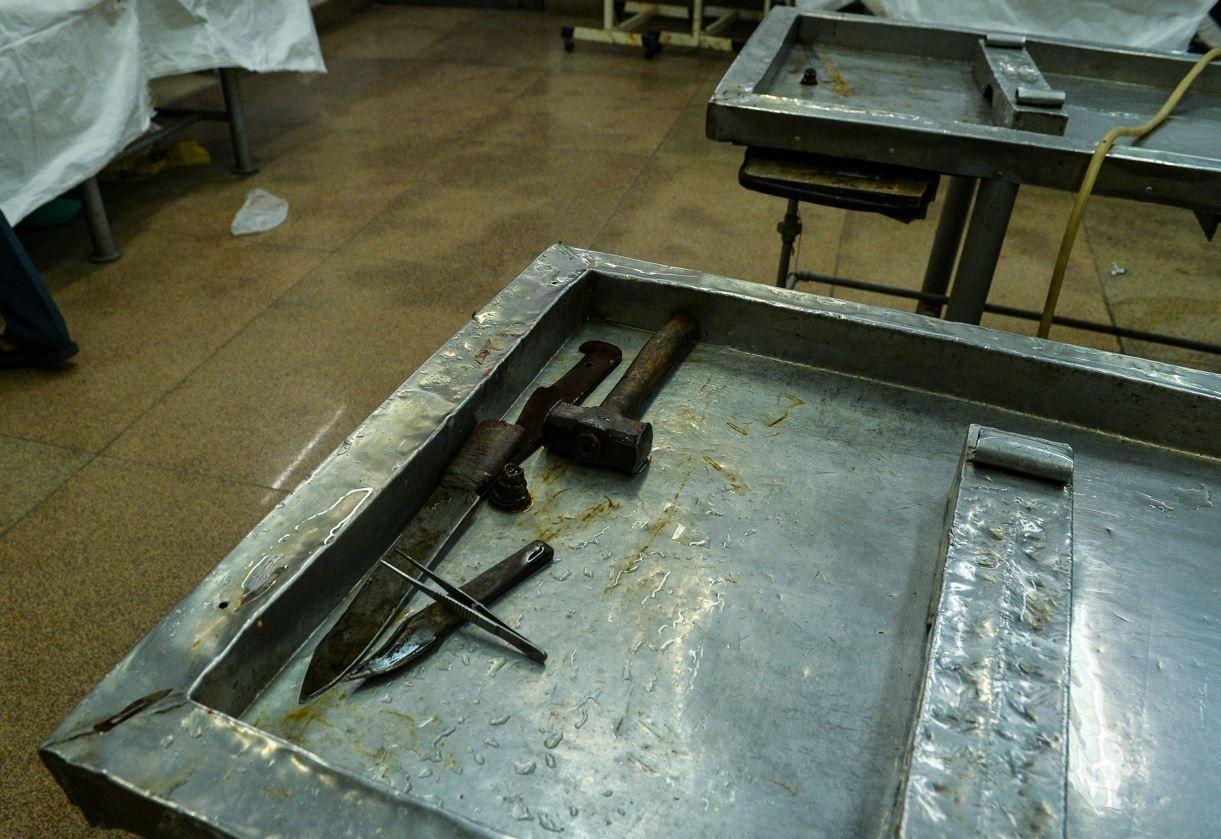
Multiple deaths
Even if event such as a natural disaster or car crash cause multiple fatalities, each death get to dey investigated separately.
“E no get any case of mass disaster for di pathologist,” na so Dr Vasu tok. “A pathologist need to address di unique situation wey di particular pesin dey face.”
In June 2001, a train derail and fall into one river in north Kerala, killing 59 pipo. Initial media reports attribute di deaths to drowning.
But wen Dr Vasu and her team conduct autopsies for di victims, dem find say only one pesin die by drowning. Odas na due to head injuries and pipo wey bag and luggage crush.
Dat same year, a bus catch fire and kill 44 pipo for Malappuram, about 50km south east of Kozhikode. Most of di bodies bin dey burnt and at di time Dr Vasu bin no get access to di right technology to do a DNA-based identification.
“We use physical features like body types along wit dia personal belongings like watches, chains, shoes, clothing and bags to identify di victims,” she remember.
Di autopsies also reveal oda identifying factors including metal plates and evidence of previous surgeries.
“One na one unusually tall man wey bin dey wear a pendant from a famous Krishna temple,” Dr Vasu tok. “Im stomach bin dey filled wit undigested biryani.”
Di dead man friends later confam say dem bin don eat biryani togeda, wey bin be one factor dem use identify am.
Improving technology
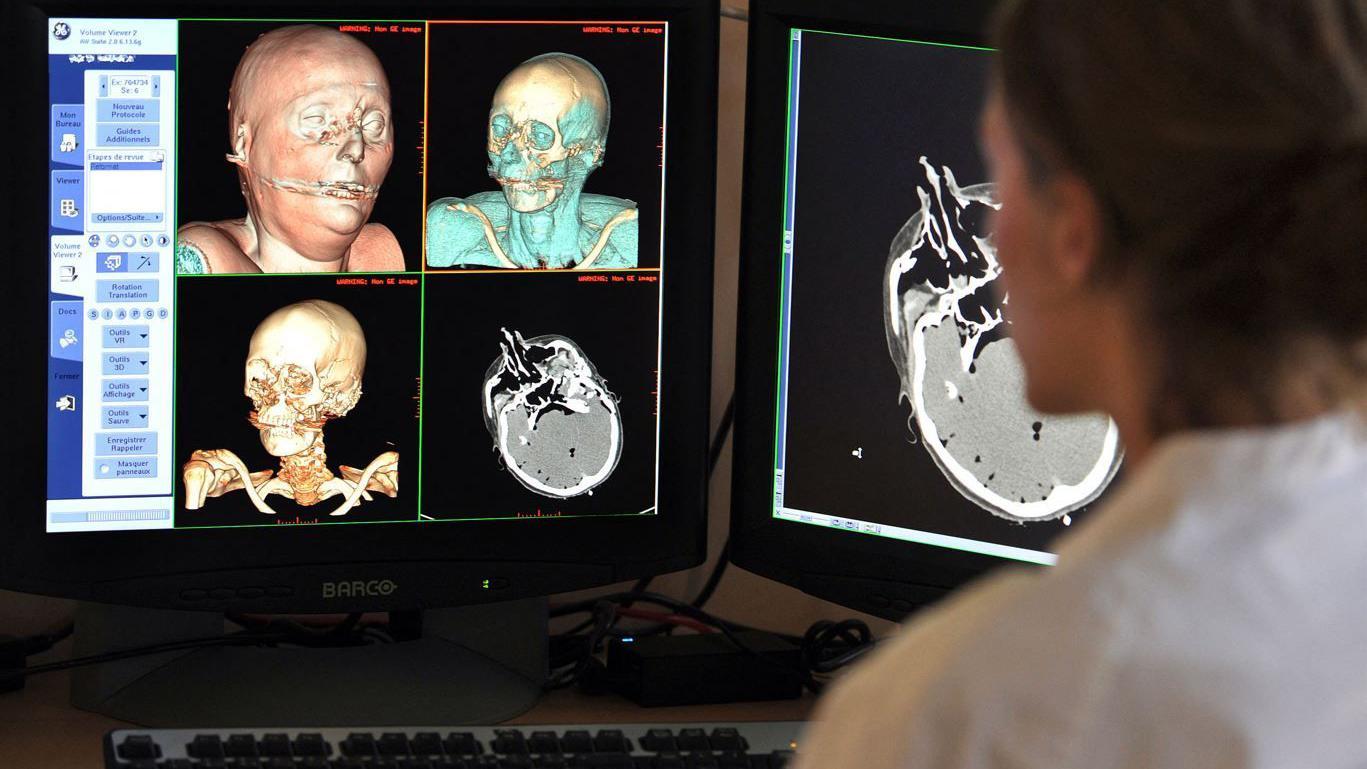
Dr Vasu don see many technological improvements during her 34-year career.
At one time, she bin dey used to seeing formaldehyde, wey we now know fit dey toxic, wey dem keep in open trays for fumigation purposes.
“Now we get UV lights to kill di germs,” she tok. “Mortuary buildings now get cross ventilation and air quality control.”
Cadaver storage methods also don improve to slow decay.
Dr Vasu dey hope say new technologies go still come.
“Singapore and Japan don already move to virtual autopsy, wey dey knifeless and bloodless,” she tok.
Bodies dey scanned by a CT scanner and “doctors go examine each layer of di body from skin to bone”.
Dis technology now dey available for parts of di US and Europe and for one premier hospital in New Delhi.
Exhausting work
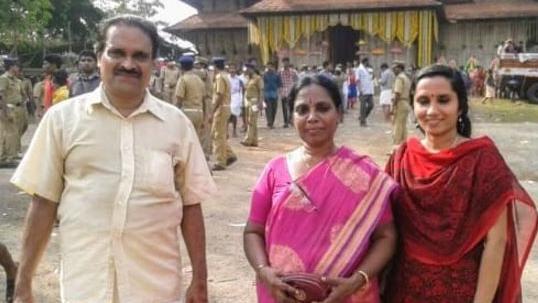
Dr Vasu do her last autopsy for 2014 and retire from service in 2016. She now dey teach for one private medical college.
While she dey happy wit wetin she don achieve, she say she dey happy to move on, explaining say working wit dead bodies dey trigger negative emotions.
“I no wan go anywia near a mortuary,” she tok. “E dey take all your energy.”
Dr Vasu no like to eat proper food wen she dey do autopsy, so she dey rely on chocolates to make her brain work well during di day.
For South India, e get a lot of cultural stigma wey dey attached to places wey dey associated wit death. Upper caste women no go usually go crematorium, but dem go participate in some death rituals.
Dr Vasu don build a bathroom outside of her home and she used to take a shower bifor she go inside afta work.
While her husband also be doctor, she say “im dey too scared to tok about” wetin she don see, and her children also dey avoid to quiz her about her career.
Even though her two sisters don serve as judges and Dr Vasu don testify before dem in court, dem too never ask “anytin about autopsies outside of di witness box”.
Di forensic pathologist say working wit di dead definitely don shape her outlook.
“To dey for mortuary go make you humble,” she tok. “You no go get dat arrogance. You go aspire to live a clean life.”


